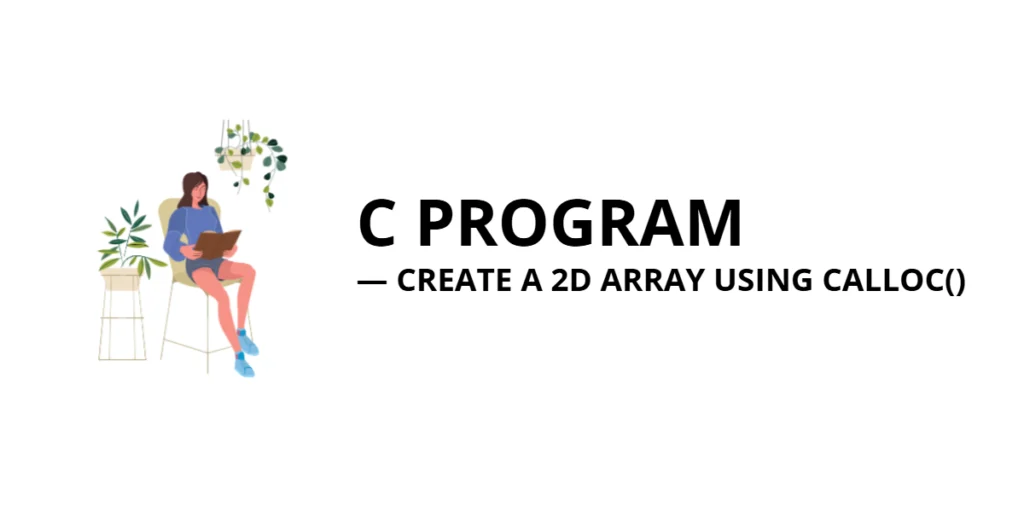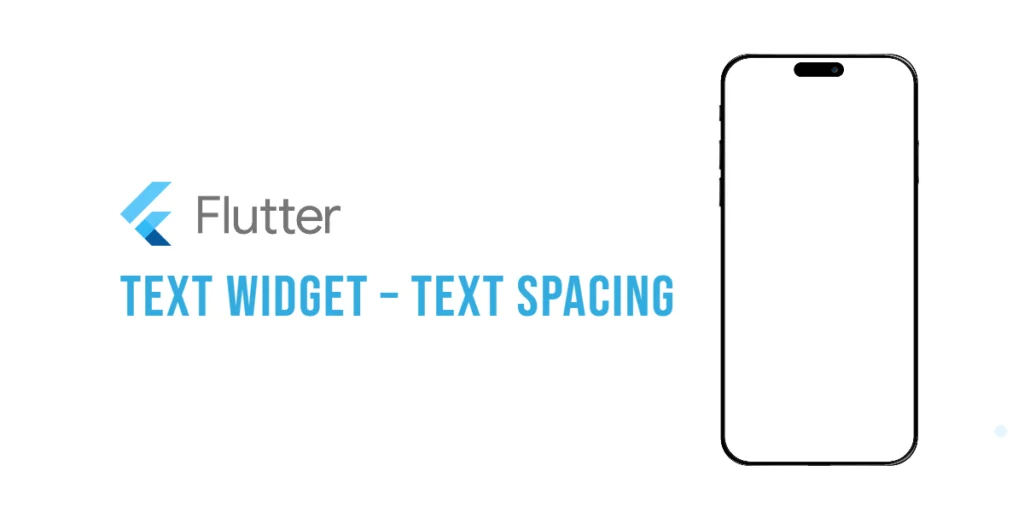In C programming, 2D arrays are essential for representing grids, tables, or matrices. While static arrays are simple to use, they require the number of rows and columns to be fixed at compile time, which limits flexibility. Dynamic memory allocation solves this problem, allowing programs to create arrays whose size can be determined at runtime based on user input or program logic.

with hands-on learning.
get the skills and confidence to land your next move.
The calloc() function is particularly useful when creating dynamic 2D arrays because it not only allocates memory but also initializes all elements to zero. This ensures predictable behavior, eliminates undefined values, and simplifies operations such as calculations, counting, or logical checks on array elements. Starting with zeroed memory reduces the need for manual initialization and makes programs safer and more reliable.
Understanding the Problem
Dynamically creating a 2D array requires allocating memory for rows and columns while ensuring proper initialization and efficient access. Using calloc() ensures all memory starts at zero, which is helpful when program logic assumes default values.
Beyond simple row-pointer or single-block methods, there are more advanced techniques. Program 3 uses pointer-to-pointer access with a contiguous data block, combining flexible row access with memory efficiency. Program 4 stores all elements in a flat 1D array accessed via a macro for 2D indexing, reducing overhead and improving cache performance. Program 5 encapsulates the array in a struct with rows, columns, and a data pointer, improving organization and simplifying function calls.
These methods let programs handle large, variable-sized matrices safely and efficiently, balancing flexibility, performance, and memory safety.
Program 1: 2D Array Using Array of Pointers
This example demonstrates creating a 2D array using calloc() for each row.
#include <stdio.h>
#include <stdlib.h>
int main() {
int rows, cols;
int **matrix;
printf("Enter number of rows: ");
scanf("%d", &rows);
printf("Enter number of columns: ");
scanf("%d", &cols);
// Allocate memory for row pointers
matrix = (int **) calloc(rows, sizeof(int *));
if (matrix == NULL) {
printf("Memory allocation failed.\n");
return 1;
}
// Allocate memory for each row
for (int i = 0; i < rows; i++) {
matrix[i] = (int *) calloc(cols, sizeof(int));
if (matrix[i] == NULL) {
printf("Memory allocation failed for row %d.\n", i);
return 1;
}
}
// Input elements
for (int i = 0; i < rows; i++) {
for (int j = 0; j < cols; j++) {
printf("Enter element [%d][%d]: ", i, j);
scanf("%d", &matrix[i][j]);
}
}
// Print elements
printf("2D Array Elements:\n");
for (int i = 0; i < rows; i++) {
for (int j = 0; j < cols; j++) {
printf("%d ", matrix[i][j]);
}
printf("\n");
}
// Free allocated memory
for (int i = 0; i < rows; i++) {
free(matrix[i]);
}
free(matrix);
return 0;
}Here, calloc() allocates memory for the array of row pointers and for each row. All elements are automatically initialized to zero, which avoids undefined behavior if the user does not provide input for every element.
Program 2: 2D Array Using Single Contiguous Block
An alternative method is to allocate a single contiguous block of memory using calloc().
#include <stdio.h>
#include <stdlib.h>
int main() {
int rows, cols;
int *matrix;
printf("Enter number of rows: ");
scanf("%d", &rows);
printf("Enter number of columns: ");
scanf("%d", &cols);
// Allocate a single contiguous block
matrix = (int *) calloc(rows * cols, sizeof(int));
if (matrix == NULL) {
printf("Memory allocation failed.\n");
return 1;
}
// Input elements
for (int i = 0; i < rows; i++) {
for (int j = 0; j < cols; j++) {
printf("Enter element [%d][%d]: ", i, j);
scanf("%d", &matrix[i * cols + j]);
}
}
// Print elements
printf("2D Array Elements:\n");
for (int i = 0; i < rows; i++) {
for (int j = 0; j < cols; j++) {
printf("%d ", matrix[i * cols + j]);
}
printf("\n");
}
free(matrix);
return 0;
}Using a contiguous block is memory-efficient and provides faster access because the elements are stored sequentially in memory. Accessing element [i][j] is done via the formula matrix[i * cols + j].
Program 3: Pointer-to-Pointer with Contiguous Data Block
This method combines the flexibility of row pointers with the efficiency of a single contiguous data block. calloc() initializes all elements to zero.
#include <stdio.h>
#include <stdlib.h>
int main() {
int rows, cols;
int **matrix;
int *data;
printf("Enter number of rows: ");
scanf("%d", &rows);
printf("Enter number of columns: ");
scanf("%d", &cols);
// Allocate memory for row pointers
matrix = (int **) calloc(rows, sizeof(int *));
if (matrix == NULL) {
printf("Memory allocation failed.\n");
return 1;
}
// Allocate a single contiguous block for all elements
data = (int *) calloc(rows * cols, sizeof(int));
if (data == NULL) {
printf("Memory allocation failed.\n");
free(matrix);
return 1;
}
// Assign row pointers
for (int i = 0; i < rows; i++) {
matrix[i] = data + i * cols;
}
// Input elements
printf("Enter matrix elements:\n");
for (int i = 0; i < rows; i++)
for (int j = 0; j < cols; j++)
scanf("%d", &matrix[i][j]);
// Print elements
printf("2D Array Elements:\n");
for (int i = 0; i < rows; i++) {
for (int j = 0; j < cols; j++)
printf("%d ", matrix[i][j]);
printf("\n");
}
// Free memory
free(data);
free(matrix);
return 0;
}This method allows convenient matrix[i][j] access while keeping all data in a single block, minimizing allocation overhead and simplifying memory management.
Program 4: Flat 1D Array with Helper Macro
A 2D array can be stored in a single 1D array and accessed via a macro. calloc() ensures all elements are initially zero.
#include <stdio.h>
#include <stdlib.h>
#define IDX(i,j,cols) ((i)*(cols) + (j))
int main() {
int rows, cols;
int *matrix;
printf("Enter number of rows: ");
scanf("%d", &rows);
printf("Enter number of columns: ");
scanf("%d", &cols);
// Allocate memory for all elements
matrix = (int *) calloc(rows * cols, sizeof(int));
if (matrix == NULL) {
printf("Memory allocation failed.\n");
return 1;
}
// Input elements
printf("Enter matrix elements:\n");
for (int i = 0; i < rows; i++)
for (int j = 0; j < cols; j++)
scanf("%d", &matrix[IDX(i,j,cols)]);
// Print elements
printf("2D Array Elements:\n");
for (int i = 0; i < rows; i++) {
for (int j = 0; j < cols; j++)
printf("%d ", matrix[IDX(i,j,cols)]);
printf("\n");
}
// Free memory
free(matrix);
return 0;
}This method is highly efficient, requires only one allocation, and eliminates the need for row pointers, though it requires manual index calculation.
Program 5: Struct-Based 2D Array
A struct can encapsulate the rows, columns, and data pointer, improving code organization and readability. All elements are initialized to zero with calloc().
#include <stdio.h>
#include <stdlib.h>
typedef struct {
int rows, cols;
int *data;
} Matrix;
int main() {
Matrix m;
printf("Enter number of rows: ");
scanf("%d", &m.rows);
printf("Enter number of columns: ");
scanf("%d", &m.cols);
// Allocate memory for all elements
m.data = (int *) calloc(m.rows * m.cols, sizeof(int));
if (m.data == NULL) {
printf("Memory allocation failed.\n");
return 1;
}
// Input elements
printf("Enter matrix elements:\n");
for (int i = 0; i < m.rows; i++)
for (int j = 0; j < m.cols; j++)
scanf("%d", &m.data[i * m.cols + j]);
// Print elements
printf("2D Array Elements:\n");
for (int i = 0; i < m.rows; i++) {
for (int j = 0; j < m.cols; j++)
printf("%d ", m.data[i * m.cols + j]);
printf("\n");
}
// Free memory
free(m.data);
return 0;
}The struct-based method keeps the array self-contained, making it easier to pass around functions and manage memory safely while maintaining clean syntax.
FAQs
1. Why use calloc() instead of malloc()?calloc() not only allocates memory but also initializes all bytes to zero. This prevents undefined behavior from uninitialized values, which is particularly useful when working with arrays, structures, or large datasets where every element should start with a known value.
2. Which method is best for large 2D arrays?
Using a single contiguous block (or a struct containing one) is the most memory-efficient approach. It reduces overhead, improves cache performance, and allows faster sequential access, making it ideal for large matrices or grids.
3. How do I free memory for a 2D array?
Freeing depends on the allocation method. For an array of pointers, each row must be freed individually before freeing the pointer array itself. For a single contiguous block, pointer-to-pointer with contiguous data, flat 1D arrays, or struct-based arrays, a single free() call on the main data block (and row pointer array if applicable) is sufficient. Always set freed pointers to NULL to avoid dangling references.
4. Can calloc() be used for structures in 2D arrays?
Yes. calloc() can allocate arrays of structures and ensures that all fields are initialized to zero. This is particularly useful for struct-based 2D arrays, preventing uninitialized members from causing unpredictable behavior.
5. Can I resize a dynamically allocated 2D array created with calloc()?
Yes, resizing is possible using realloc(). For array-of-pointers methods, each row can be resized individually. For contiguous blocks, flat 1D arrays, or struct-based arrays, the entire block can be reallocated. Careful handling is required to preserve existing data and prevent memory leaks.
Conclusion
Creating 2D arrays dynamically using calloc() provides both flexibility and predictable initialization. The choice of method—array of pointers, single contiguous block, hybrid pointer-to-pointer, flat 1D array, or struct-based array—depends on the program’s needs, memory efficiency requirements, and code readability preferences.
By mastering these techniques, you can efficiently handle matrices, grids, and tables of varying sizes, prevent memory leaks, and ensure that every element starts with a known value. Proper allocation, access, and deallocation practices make your C programs safer, more robust, and better suited for large-scale or long-running applications.
References & Additional Resources
The following resources cover dynamic memory allocation in C, with focus on 2D arrays, calloc(), and proper use of pointers.
- Kernighan, B. W., & Ritchie, D. M. (1988). The C Programming Language (2nd Edition). Prentice Hall – Classic reference covering pointers, memory allocation, and dynamic arrays.
- Thareja, R. (2011). Data Structures Using C. Oxford University Press – Detailed explanations of dynamic memory allocation,
calloc(), and multidimensional arrays. - GeeksforGeeks: Dynamic 2D Array in C – Step-by-step guide to allocating and accessing 2D arrays dynamically.
- Tutorialspoint: calloc() in C – Explanation and usage examples of
calloc()for memory allocation. - Cprogramming.com: Pointers in C – Beginner-friendly guide to pointers and memory management.
- cplusplus.com: calloc() – Official documentation for the
calloc()function.






